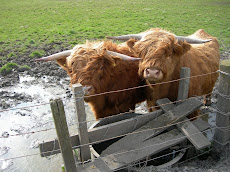The Island of Ailsa Craig.
What is Ailsa Craig? Ailsa Craig is a very well known landmark in Scotland and is a renowned bird sanctuary. The island is home to one of the largest gannet colonies on the world, with more than 70,000 birds, and is designated as a European Special Protection Area.
Ailsa Craig, in the Firth of Clyde, is an Island rising abruptly from the sea to an elevation of 1,110 feet. It is a volcanic plug which lies in the firth of Clyde, being active about 500 million years ago.
Who owns Ailsa Craig? Ailsa Craig is owned by the Kennedy family, whose title was taken from Marques of Ailsa. Ailsa Craig had been part of the lands of Crossraguel Abbey; the dispute of ownership of these lands had formed the background to the notorious "Roasting of the Abbot" in the 16th century. The Kennedy family were also the owners of Culzean Castle, who is now owned by the National Trust.
Where is Ailsa Craig? The distinctive dome-shaped island-rock lies approximately 8 miles from Girvan, and approximately 12 miles from Maidens on the coast of South Ayrshire. It rises sharply from the Firth of Clyde to a height of 340m (1114 feet). Its position is: Latitude 55° 15.1'N, Longitude 5° 06.4'W
It has a conical summit and is very precipitous except on the North East Side where it slopes more gently and is accessible. It can be seen from Girvan for miles in either direction along the Ayrshire coast. The shape appears to change as you move along the coast, viewing it from different angles.
The Background of Ailsa Craig. Ailsa Craig comes from the Gaelic for 'Fairy Rock', is 1200m (1300 yards) long and 800m (900 yards) wide, with an area of 100 Ha (245 acres). It is also known as Paddy's Milestone owing to its position as a landmark en route from Ireland.
What is Ailsa Craig made from? The island was the heart of an ancient volcano, its rock exhibiting fine columnar structure and was renowned as the source of a superior micro-granite used to fashion curling stones.
Indeed, most curling stones still in use today were made from Ailsa Craig granite. It was here that the curling stones used by the Scottish Women's Curling Team, winter 2002 Olympic Gold medal winners, were made.
The Living History of Ailsa Craig. By the late 19th Century the island had a population of 29 people, working in the quarries or the lighthouse. In 1881, petitions were received by the Commissioners of Northern Lighthouses from Lloyds and the Scottish Shipmasters Association requesting the erection of two fog signals and a lighthouse on Ailsa Craig. The Board of Trade and Trinity House both agreed to the proposal and work commenced the following year. The construction was supervised in 1883-6 by Thomas and his nephew David Stevenson, Engineers to the Board. (Thomas was the father of Robert Louis Stevenson). The light was first exhibited on the night of 15 June 1886, an oil burning light which remained in use until 24 January 1911, when it was converted to incandescent.
Siren fog signals were erected on the North and South ends of Ailsa Craig and were powered by gas engines until 1911, when they were replaced by oil driven engines.
These fog signals were permanently discontinued in November 1966, and replaced by a Tyfon fog signal, which had a character of 3 blasts, each of three seconds duration every 45 seconds. It was sounded from a position close to the South East of the Lighthouse tower and not at either of the previous siren signals sites.
This fog signal was discontinued in 1987. Until wireless telephone communications were established on Ailsa Craig in 1935, the light keepers and employees of Ailsa Craig Granites Ltd used to depend on pigeons for the conveyance of messages.
A pigeon house was established at Girvan Green, where the town council established a parking place for cars and buses in 1935.
The Upgraded Light House on Ailsa Craig. The lighthouse was automated in 1990 and is now remotely monitored from the Northern Lighthouse Board's offices in Edinburgh. In 2001 as part of the refurbishment and de-gassing programme Alisa Craig Lighthouse was converted to solar-electric power.
Local sayings. "When Ailsa Craig has on its coat, The Weather will be very hot, (hoat). When Ailsa Craig has on its hat, You can be sure it will be wet, (wat). When Ailsa Craig has on its tie, That's a sign its going to be dry" The 'coat', 'hat' and 'tie' are the clouds or mist often seen at Ailsa Craig.
There is only one harbour to Ailsa Craig. It is adequate to land, but only just. The water here gets deep very quickly.
At one time, you were discouraged from landing on Ailsa Craig, but now the freedom of the country side act, allows you full access, as long as you act responsibly.
Please feel free to use this article in any way you wish. It appears on my website at www.keelbilge.com [http://www.keelbilge.com], where I have included many photos to give a flavour of the island. All I ask is that you include my website URL address, preferably attributing it to myself, Gordon McCulloch.
I would also be happy to answer any questions you may have by contacting me at GCCMCCULLOCH@aol.com.
About the Author. Gordon McCulloch is a professional engineer and teacher. He has worked and sailed in boats all his life. He was brought up near the coast, served with the Merchant Marine, and now occupies himself with all forms of water sports, in which he has developed his skill as a webmaster. Feel free to visit and comment on his website site at [http://www.keelbilge.com]
Article Source: http://EzineArticles.com/?expert=Gordon_Mcculloch
Gordon Mcculloch - EzineArticles Expert Author
Wednesday, 26 May 2010
Subscribe to:
Post Comments (Atom)











No comments:
Post a Comment